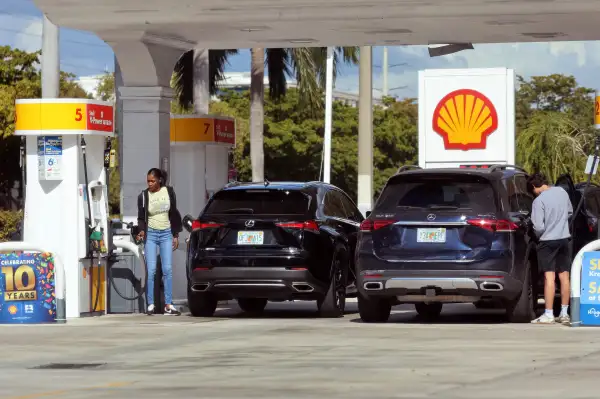Here's How Much Gas Prices Could Rise After OPEC's Supply Cuts

Drivers should expect gas prices to rise following Sunday's announcement of oil supply cuts from Saudi Arabia and other oil-producing countries in the OPEC+ group.
The price of the average gallon of gas, which currently stands at $3.48, could go up by as much as 15 cents as a result of the cuts, Patrick De Haan, GasBuddy's head of petroleum, said in a tweet. Gas prices have increased by about 12 cents in the past month due to "robust demand" from drivers and higher oil prices, according to AAA.
Crude oil, which accounts for about 53% of what drivers pay for a gallon of gas, was trading at around $80 per a barrel on Monday after shooting up by more than 6% following the announcement, according to the West Texas Intermediate measure.
The price is up about 19% from a recent low just below $67 on March 17. Still, the price of oil is more than 22% lower than it was a year ago, a couple months after Russia’s invasion of Ukraine sent oil and gas prices soaring.
The next step
Average gas prices are currently at or above $3 per gallon in all 50 states, and it appears unlikely that prices anywhere will drop following the supply cut, which OPEC said will total 1.6 million barrels per day and is "aimed at supporting the stability of the oil market."
Here's a look at gas prices around the country now, and where they're likely heading:
- The state with the cheapest gasoline is Mississippi, where the average is $3 a gallon. Seven of the 10 states with the cheapest gas are in the South, where proximity to refineries and lower taxes generally make for lower gas prices.
- The average gallon costs at least $4 in five states — California ($4.79), Hawaii ($4.78), Arizona ($4.28), Washington ($4.24) and Nevada ($4.19) — and more states could soon join them.
- Even before the cut, which OPEC says will start in May and last through the end of the year, experts were expecting gas prices to rise this spring.
- GasBuddy recently reported that a $4 national average is possible by Memorial Day, noting that prices typically rise as temperatures warm.
- The seasonal trend is related to the annual transition to more expensive summer-grade gasoline, which usually coincides with rising demand as the weather improves and the busiest summer driving months approach.
- Even if prices rise as forecast, they'll be lower than last summer — when the national average topped $5 a gallon.
More from Money:
The Share of New Cars That Are Electric Vehicles Has Tripled in 2 Years


